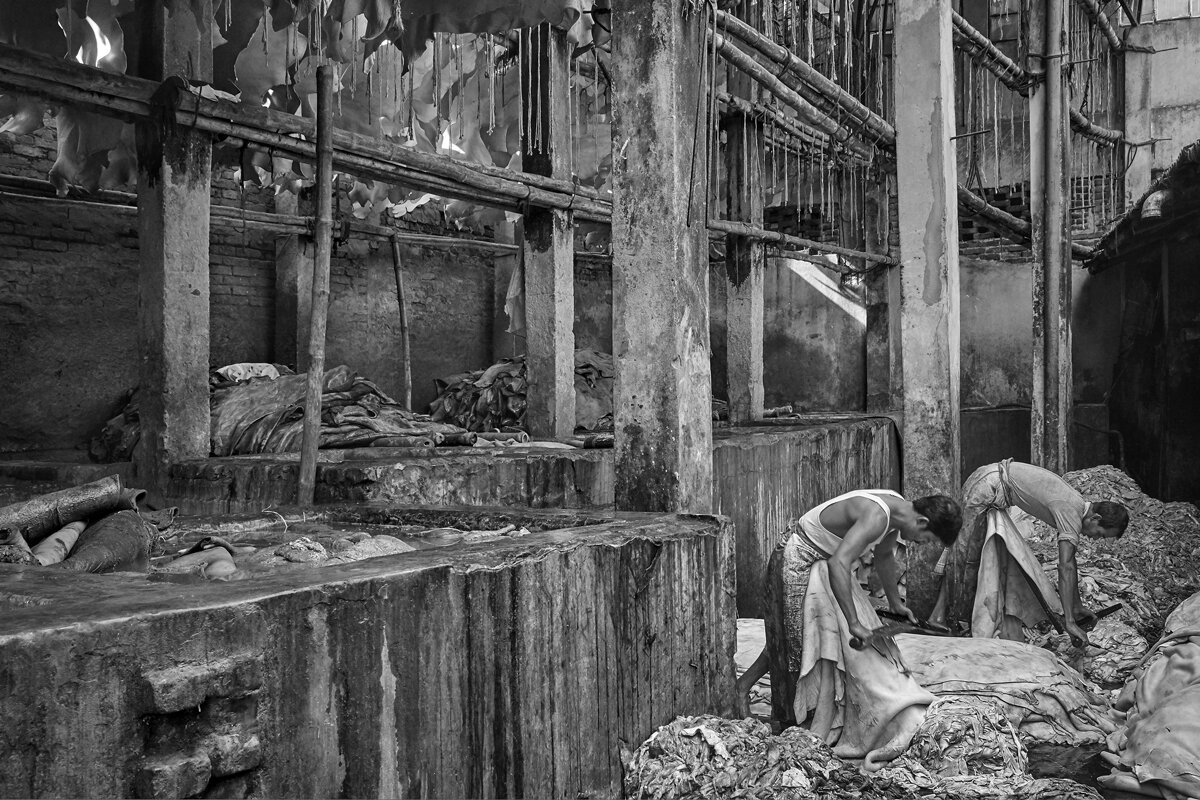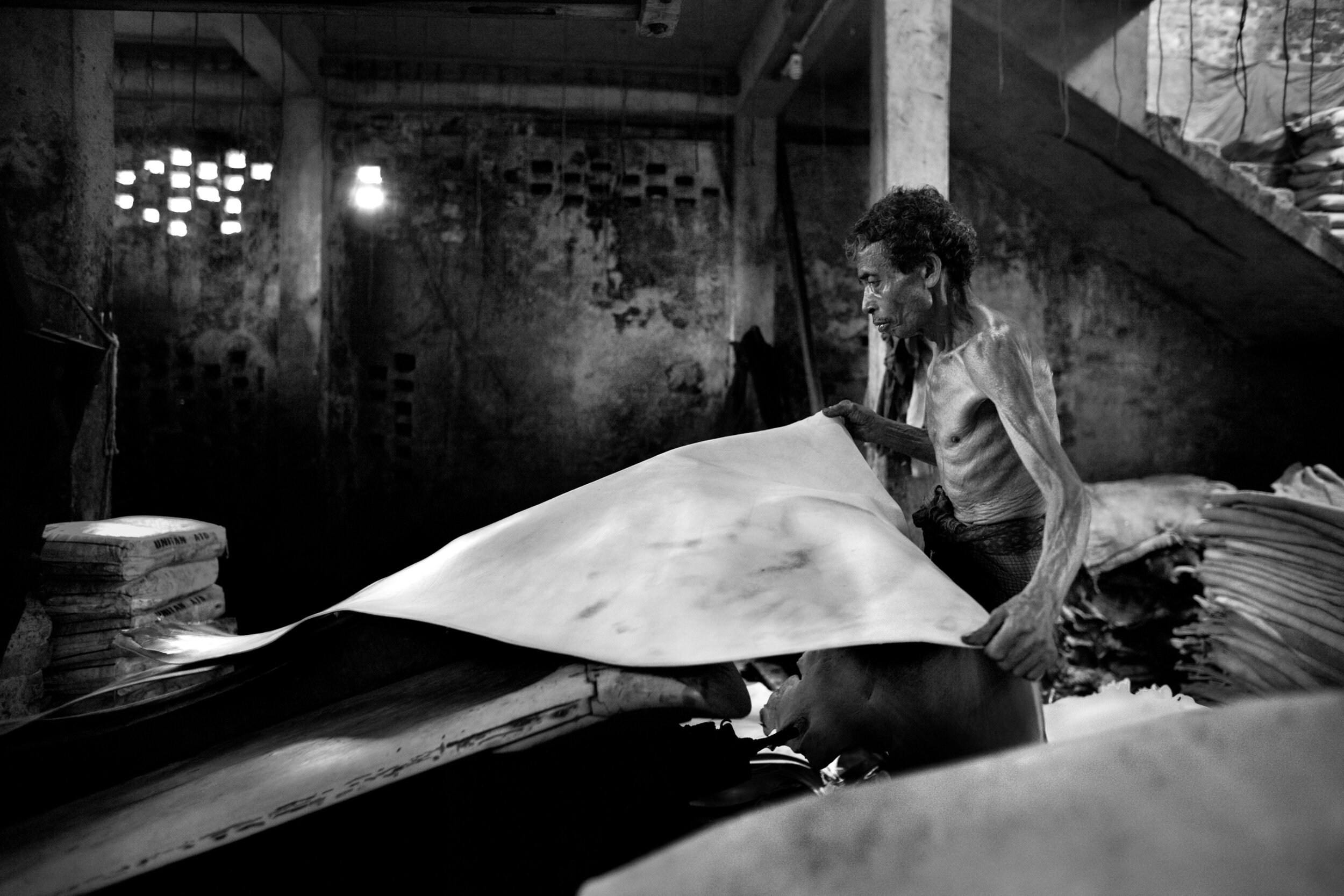Toxic Tanneries
(Bangladesh, India, Morocco)
The tanning industry is one of the most toxic and profitable industries in Bangladesh. There are about over 200 tanneries in the Hazaribagh district of Dhaka that sell to international fashion labels. Many are still operating as they did 100 years ago with little technology or machinery. Majority of them operate in residential areas beside residential housing and food processing plants. During the tanning process, the animal skin is treated with a number of toxic and dangerous chemicals such as chromium, manganese, lead, sulphur, and ammonia to prevent it from decomposing. The resulting liquid waste is often disposed of untreated into sewage lines and waterways leaking into the ground water and rivers of Dhaka – home to 12 million people. It is rare for workers at these highly toxic production areas to be wearing protective clothing. In fact, they are usually wearing just a toga around the waist as they are handling the leather skins soaked with acids and dyes with their bare hands and feet. Workers processing the rawhides with toxic chemicals are usually working in poorly ventilated and poorly lit tanneries. Often the only light and ventilation coming into the work area are through cracks and openings in the walls. About 80% of all leather production in the world comes from these third world countries where safety regulations for the workers and the environment are non-existent. Even as profit in the industry soars, fuelled by an insatiable international appetite for leather and leather goods, very little is done to protect the environment and the workers in one of the most toxic industries in Bangladesh.





















